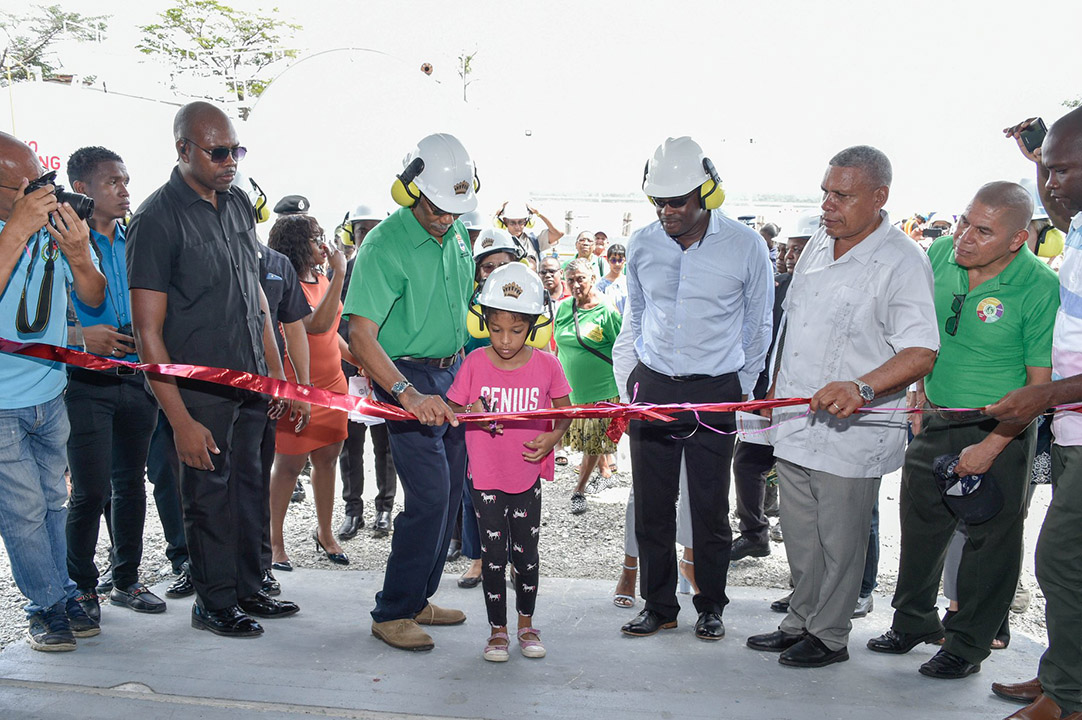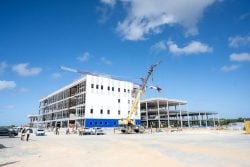A US$3.4 million ($714 million) power plant, capable of generating 3.3 megawatts (MW) of electricity was commissioned at Bartica yesterday with officials expressing optimism that it would banish the town’s power woes as the generating capacity is above its peak requirements.
The project was undertaken by the Guyana Power and Light (GPL) in partnership with the Ministry of Public Infrastructure and was commissioned by President David Granger yesterday.
Speaking at the commissioning ceremony, Minister of Public Infrastructure David Patterson said that the new power plant, when combined with mobile generating units, would see Bartica accessing approximately 5.5 MW [3.3 commissioned and 2.2 reserved] of electricity. An additional 2.5 MW of electricity generated from renewable energy sources would also be fed into the electrical grid by the end of next year, he said.
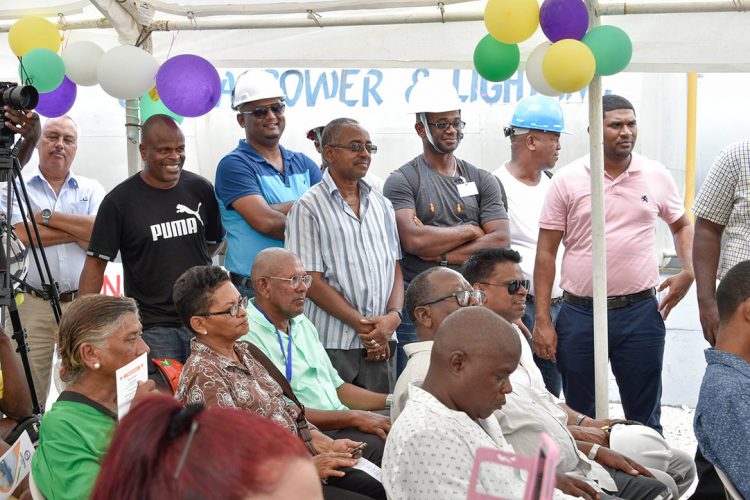
He noted that a hybrid system is already in place to allow energy from renewable sources to be fed into the power grid.
“I am glad to announce that plans are afoot to install a 1.5 MW photovoltaic solar farm with storage [in Bartica]. This project is currently in the procurement stage with international bids opening in January 2020. [Power supply will] further be increased by connecting the power supply to the 1 MW hydro plant to be built by the [Guyana Energy Agency] at the Ikuribisi falls,” the minister disclosed.
This, he said, serves as assurance to the residents and businesses that government remains committed to the future growth and development of the town.

“Electricity generation is a critical component in infrastructure for a country and Guyana is no exception. In addition to meeting needs of households, education and different forms of community life, electricity serves as a backbone of industrialisation and commerce and a rival in industry competitiveness. Bartica is a major town. Consequently, one would expect that in keeping with its administrative duties and economics, Bartica must be endowed with the infrastructure to continue playing its pivotal role in the development of Guyana,” said Patterson.

He recalled that GPL and the ministry took a decision to overhaul the power supply in the region after the old power plant failed to function as expected. The old power plant, which was installed in the year 2000, had an electricity producing capacity of 4 MW of power but over the years, lost effectiveness and over time became “increasingly unreliable and could no longer do the job after 18 years,” Patterson added.
The decision to install the generation sets were also as a result of frequent complaints from residents of the communities served by the power plant. He recalled that during a visit, complaints of unreliable electricity supply greeted his team and this was cited as the cause of hindered development in the township.
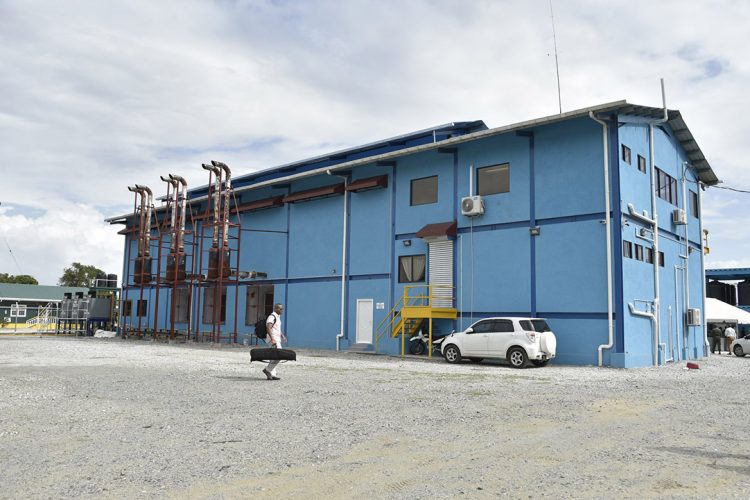
“Complaints of blackouts were frequent. Frustration was mounting among residents, night-time studies were difficult for schoolchildren, commerce and industry could not get the support they deserved and the old plant had become an environmental hazard. No serious institution or government would allow that to continue. So, with the blessings of this administration, GPL was allowed to go ahead and make the investment necessary to provide Bartica with stable and reliable electricity,” he said.
Energy security
In his address, Granger said that despite the fact that it was a fossil fuel power plant that was being commissioned, his administration is moving closer and is committed to achieving 100 per cent renewable energy. He highlighted that during the “decade of development” (2020-2030), there would be accelerated developments in all sector and focus would be placed on energy security.
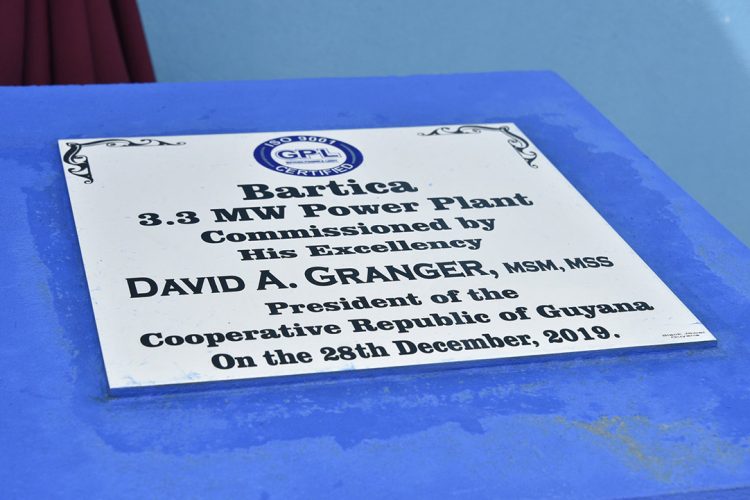
“So energy security during this transition period will be delivered [and] not delay development. Transition measures will be implemented and initiatives will be undertaken to ensure that the demands for energy is met during this period of transition,” the president said, while pointing out that fossil fuel energy plants are currently being used to provide electricity to citizens.
“Your government is committed to moving closer to the goal of 100 per cent renewable energy use so we know this is based on fossil fuel today but we are still moving towards the goal of providing renewable energy. We recognise the importance of ensuring adequate, accessible and affordable energy in the short and medium term while we are making this transition to renewable energy,” Granger stated.
He announced that during the next ten years, there will be promotion of greater energy efficiency, including upgrading the existing electricity network and mandating energy efficient technologies for new buildings by 2030. Private energy producers will also be encouraged to supply power to the national grid and off grid communities. Granger added too that focus would be placed on expansion of the hinterland and rural electrification programme to unserved and underserved communities and guaranteeing affordable, reliable and stable electricity for households and businesses.
“Energy is essential to development anywhere, more particularly when we speak of hinterland development. When we speak of electrification, it is a massive undertaking… Energy security is our ultimate objective. Energy security is vital to ensuring a comfortable life for all. It is essential for human progress and well-being but we’re still moving my friends, towards a generation [from] sustainable sources,” the president emphasised.
Further, he stated that Bartica would be able to fulfill “its ambitions only if it has access to adequate, reliable and stable energy to satisfy its future demands so when investors come here, they know they have reliable source of energy.”
The president related that the vision of his government is “to build strong regions, not half strong and half weak; each region must have a capital town to drive its development.”
Meanwhile, Regional Chairman Gordon Bradford hailed the commissioning as a “significant development” not only for the town but for the region. During a brief address, he said that Bartica has been plagued with unreliable power supply since the mid-2000s and the region had considered restarting the operations of an old power plant in Bartica.
Apart from power outages, Bradford pointed out that the town has had to deal with excessive noise pollution from the old generator. “We have been working on this for years, but sometimes it had been so frustrating that we thought that it would have never happen. This is a significant development. This power plant will definitely encourage investors to come to the region. The 1.5 MW that will be added to the grid would be more than enough to power Bartica and its development,” the chairman highlighted.
The commissioning ceremony also saw First Lady Sandra Granger, Minister of Social Cohesion with responsibility for Culture, Youth and Sport, Dr George Norton, Chief Executive Officer of GPL Albert Gordon and other directors of GPL’s Board in attendance.
